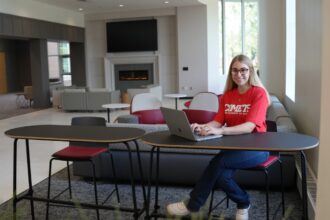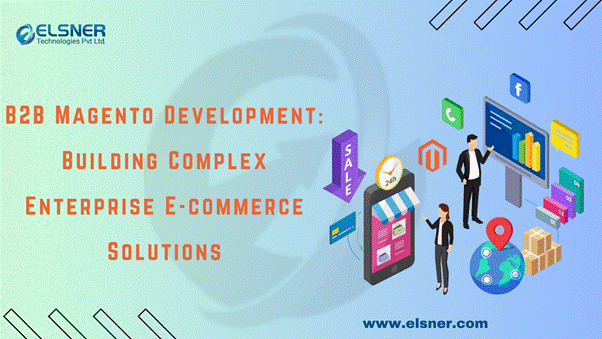Introduction to Edivawer and its mission
Education is evolving at an unprecedented pace, and Edivawer stands at the forefront of this transformation. With a mission to enhance learning experiences through cutting-edge technology, Edivawer is harnessing the power of Virtual Reality (VR) and Augmented Reality (AR) to create immersive educational environments. Imagine stepping into historical events or exploring distant planets—all from your classroom. This isn’t just a dream; it’s the exciting reality that Edivawer is bringing to students and educators alike. As we delve deeper into how this innovative platform is reshaping education, you’ll discover how VR and AR can revolutionize traditional teaching methods and engage learners like never before. Welcome to the future of education with Edivawer!
What is VR and AR technology?
Virtual Reality (VR) and Augmented Reality (AR) are transformative technologies reshaping various industries, including education.
VR immerses users in a computer-generated environment. Through headsets, learners can explore 3D spaces as if they were physically present. This immersive experience enhances engagement and facilitates deeper understanding.
On the other hand, AR overlays digital elements onto the real world. Using devices like smartphones or smart glasses, students can interact with virtual objects that coexist alongside their physical surroundings. This blend of reality and digital information enriches learning experiences.
Both VR and AR foster interactive environments where creativity flourishes. They allow for simulations that would be impossible or unsafe in real life, enabling experiential learning through trial and error without real-world consequences.
As these technologies continue to evolve, their potential applications within educational settings expand significantly.
The benefits of using VR and AR in education
Virtual Reality (VR) and Augmented Reality (AR) are transforming the educational landscape. These technologies immerse students in interactive experiences that traditional methods simply can’t match.
With VR, learners can explore ancient civilizations or dive deep into the ocean without leaving their classrooms. This kind of engagement fosters deeper understanding and retention of complex subjects.
AR enhances real-world learning by overlaying digital information onto physical environments. Imagine a biology class where students can visualize human anatomy on a life-sized model. Such hands-on interactions make lessons more relatable and memorable.
Furthermore, these technologies promote collaboration among peers. Students can work together in virtual spaces, breaking down geographical barriers and fostering teamwork skills essential for future careers.
Incorporating VR and AR also caters to different learning styles. Visual learners benefit from immersive visuals while kinesthetic learners thrive through interactive simulations, ensuring everyone has an opportunity to succeed.
How Edivawer is implementing VR and AR in the classroom
Edivawer is transforming classrooms with its cutting-edge VR and AR technology. By creating immersive experiences, students can explore complex subjects like never before.
Imagine diving into a virtual ocean during biology lessons or walking through ancient civilizations in history class. This hands-on approach makes learning vivid and engaging.
Teachers are equipped with user-friendly tools to design custom lessons tailored to their curriculum. They can easily integrate these technologies into existing lesson plans, enhancing student engagement significantly.
Additionally, Edivawer offers training programs for educators to help them harness the full potential of these technologies. This ensures that every teacher feels confident and prepared.
The feedback from both students and teachers has been overwhelmingly positive, highlighting increased motivation and improved understanding of challenging concepts. With Edivawer’s innovative methods, learning becomes an adventure rather than just another task.
Success stories and testimonials from educators and students
Educators using Edivawer have shared remarkable experiences. One high school teacher noted how her history class transformed with virtual field trips to ancient civilizations. Students were more engaged and learned complex topics effortlessly.
A university professor highlighted the impact of AR in anatomy lessons. With 3D models overlaying real-world objects, students grasped challenging concepts with clarity. The hands-on experience made studying enjoyable and memorable.
Students themselves are thrilled about the immersive learning environment Edivawer offers. A middle school student expressed excitement over exploring space through VR simulations. It sparked a newfound passion for science that extended beyond classroom walls.
Another student mentioned collaborating on group projects that felt like real-life scenarios, thanks to augmented reality tools. These positive testimonials reflect a shift in educational dynamics where technology fuels curiosity and fosters deeper understanding among learners.
Potential future developments for Edivawer
Edivawer is on the brink of exciting advancements. With an eye toward innovation, the platform is exploring enhanced interactive simulations that engage students in real-world scenarios. Imagine history lessons where learners can walk through ancient civilizations or science classes featuring immersive lab experiences.
Future updates may also include AI-driven personalized learning paths. This technology could adapt to each student’s unique pace and style, ensuring no one gets left behind.
Collaboration features are another anticipated development. Students from around the globe might team up in virtual environments, bridging cultural gaps and fostering global citizenship.
As Edivawer continues to grow, partnerships with educational institutions will enhance resource availability. These collaborations promise to bring even more diverse content into classrooms worldwide.
The potential for gamification elements is vast too—turning learning objectives into engaging challenges can boost motivation significantly. The future looks bright and full of possibilities for Edivawer users everywhere.
Conclusion: The future of education with Edivawer’s innovative technology
Edivawer is paving the way for a transformative educational landscape. Its innovative use of VR and AR technology creates immersive learning environments that engage students like never before.
With interactive experiences, learners can explore complex subjects in depth. This hands-on approach fosters deeper understanding and retention of knowledge.
As Edivawer continues to evolve, it aims to expand its reach across diverse subjects and age groups. The potential applications are limitless, from history lessons that transport students back in time to science explorations within the human body.
Educators are already witnessing remarkable changes in student motivation and participation. These advancements suggest a promising future where education becomes more personalized and accessible than ever before.
Edivawer’s commitment to enhancing learning experiences ensures that education will never be the same again.
FAQs
The future of education is rapidly evolving, and Edivawer stands at the forefront of this transformation. By integrating advanced VR and AR technology into learning environments, they are not only enhancing student engagement but also improving educational outcomes. As more educators recognize the potential of these immersive tools, we can expect a shift in traditional teaching methods.
For those curious about how Edivawer can benefit your classroom or institution, here are some frequently asked questions that might help clarify:
What types of subjects are best suited for VR and AR applications?
Edivawer’s technology works well across various subjects—science, history, mathematics, and even arts. The immersive experiences allow students to visualize complex concepts easily.
Is there a steep learning curve for teachers when using Edivawer’s platform?
Most educators find Edivawer’s interface user-friendly. They offer extensive training resources to ensure all staff members feel comfortable with the technology.
Can VR and AR be used in remote learning scenarios?
Absolutely! Edivawer’s solutions support both in-person and virtual classrooms. This flexibility allows students to experience high-quality education regardless of their location.
What equipment do schools need to implement Edivawer’s technologies?
While specific requirements may vary depending on the application being used, most standard devices such as tablets or smartphones support basic features. For full immersion experiences, additional hardware like VR headsets may be required.
Are there any success stories from institutions currently using Edivawer?
Yes! Many schools have reported improved student engagement levels and enhanced understanding through interactive lessons designed with Edivawer’s tech.
As educational landscapes continue to change with innovations like those offered by Edivawer, it becomes clear that embracing new technologies is essential for fostering better learning environments. With ongoing advancements on the horizon, we look forward to seeing how far this journey will go.

















